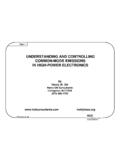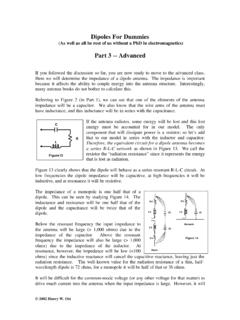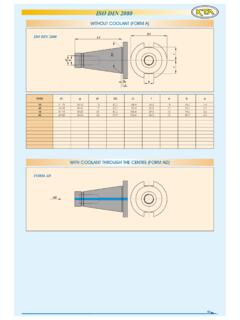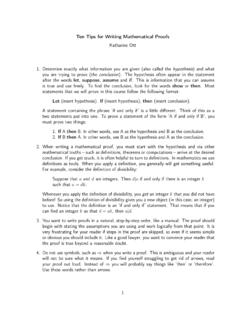Transcription of Dimensional analysis worksheet - Doc Ott
1 Dimensional analysis worksheet The following conversion factors will be used in this activity 100 cm = 1 m 1000 mL = 1 L 1000 g = 1 kg cm = 1 inch g Br2 = 1 mL Br2 1609 m = 1 mile 1 foot = 12 inch 1 hour = 60 min 1 min = 60 sec 1 day = 24 hours Recall that you can divide both sides of an equation by the same number and it does not change the value of the equality. So if we take the equality 100 cm= 1m, we can divide both sides by 1 m. 100 cm1 m1 m1 m= both sides of this equation are equal to 1. I also know that I can multiply any number by 1 and it does not change the numerical value. This means I can multiply anything I want by 100 cm1 m because it is equal to the number 1. Alternatively, I can multiply anything I want by the inverse relationship, 1 m100 cmwhich is also equal to 1. Conversion Cards On one side of an index card (or small cut up index card), write one fraction version of one conversion factor, and the inverse fraction version on the flip side.
2 An example card would look like: Do this for all the conversion given above. 100 cm 1 m 1 m 100 cm Front Back Sample question: How many meters are in 435 cm? In this problem the conversion factor 100 cm = 1 m is needed. The problem starts with the measured quantity we are trying to convert, 435 cm. The conversion card is placed next to the quantity we are trying to convert. With 435 cm written, the fraction version that allows cancellation of cm units should be placed next to the 435 cm: 435 cm x The unit cm in the 435 cm now cancels with the cm in the denominator of the conversion card, so the only unit left is m. The answer is thus 435x1 m /100 = m. 1 m 100 cm For each problem follow these steps: a. Figure out what number to start the calculation with. What number/unit combination are you trying to change? Do not start with a conversion factor. Write that number/unit combination on your paper. b. Determine what is the first conversion factor you need.
3 You are trying to cancel a unit out. Select a conversion factor that allows you to cancel the unit you started with and gets you closer to the target Physically place the correct card (correct side up) next to your number/unit combination you made in step a. c. Continue to find conversion cards to cancel out unwanted units that gets you closer to your desired unit. d. Once you have the cards set up in the correct order and have ended with the correct unit(s), write down on your paper exactly what the cards read in the order in which they are written. Cross out the units. Are you left with the correct unit(s)? e. As you become more comfortable with the process, try solving a problem without the cards. Practice Problems: note: The problems begin with very easy problems and become progressively harder.. Convert g into kilograms . What is the volume in mL of g of Br2? . What is the mass (in kg) of L of Br2? . How many inches are in miles?
4 Dr. Ott can run a marathon ( miles) in hours. What is his average speed in m/s? driving miles/hour when traveling (including stops and sleeping) how far can I get days? o make a 100 cm = 1 m conversion factor. You must remember to cube the number as well as the units. 1 2 3 4 5 6. If I averagein 7. 1 mL is equal to 1 cm3. What is the mass (in kg) of m3 of Br2? Hint: You will have tnew conversion factor between cm3 and m3. This can be done by cubing both sides of the





